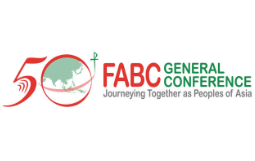The month in which Francis sought to change the Church
With the first session of the Synod assembly on the future of the Church now over, here is an assessment of the historic gathering that discussed subjects previously considered taboo.
Nov 10, 2023

By Loup Besmond de Senneville
With the first session of the Synod assembly on the future of the Church now over, here is an assessment of the historic gathering that discussed subjects previously considered taboo.
“In any case, this Synod is the Synod of silence,” sighed a Roman Curia official while sipping a cappuccino at a well-known coffee bar in the Borgo Pio, the neighbourhood bordering the Vatican where Pope Francis’ decisions are commented on endlessly.
The official made the comment just a few days after Francis opened the 16th Ordinary General Assembly of the Synod of Bishops inside the expansive Paul VI Hall by instructing its 364 members to “fast from speaking publicly” about the October 4-29 gathering on the future of the Church.
The silence of the synod fathers and mothers, who were invited to the Vatican after a two-year consultation with all the People of God, was immediately established as an iron law. The Pope said it was a way of guaranteeing freedom of speech and reducing pressure felt from the media during previous Synod meetings, such as the assemblies on the Amazon or the family.
“What amazes me most is that there are still journalists here,” said an annoyed African bishop we bumped into at an evening gathering at a venue overlooking St Peter’s Square and Basilica.
Despite the closed-door atmosphere, La Croix was able to speak to some thirty people — cardinals, bishops, theologians and lay men and women — who participated in the month-long synod assembly on Synodality.
Chapter 1: Discovery
The assembly’s 365 members (364 participants, plus Pope Francis) entered the Paul VI Hall on October 4 in a state of bewilderment. This large auditorium, which is used mainly for the Pope’s weekly audiences during cold or inclement weather, is usually packed with thousands of pilgrims and visitors who have come to see the Successor of Peter. But on this morning, the rows of seats had been replaced by round tables — 35 in all — each surrounded by a dozen chairs.
Some of the 60 or so cardinals present had already attended several synod assemblies in the past. At the previous gatherings, they met in the amphitheatre-like Synod Hall, located on the floor above this auditorium, where the bishops are seated by rank. The cardinals in the front rows, then bishops and heads of male religious orders filling the seats behind them according to seniority. In the upper, back rows were the non-voting experts and observers, among them lay people (including women and women religious).
But things were much different this time. In fact, everything was changed. The Pope invited 96 non-bishops, including 54 women, to sit at the tables alongside the hierarchs. It was quite a revolution.
This would be a true sign of equality and was the arrangement for the entirety of the nearly month-long assembly, both during small group discussions and the general congregations. They would go on to discuss topics as sensitive as Church governance, the place of the laity (particularly the role of women) and the evangelisation of mission territories. The organisers were largely made up of people well-formed in Ignatian spirituality, such as Xaviere Sr Nathalie Becquart of France and Jesuit Cardinal Jean-Claude Hollerich of Luxembourg. And the method they employed was that the discussions were always to start by sharing personal experiences.
“You can really say what you think, because you know you won’t be attacked by the person opposite,” explained one of the bishops.
But others were less enthusiastic, complaining that the method is too rigid, even childish. The roundtable discussions were frank but never got into theological debates. The composition of those sitting the roundtables changed continuously. At one point, one of the Italian-speaking groups included the archbishop of Moscow, the head of the Ukrainian Greek Catholic Church, Italian Cardinal Matteo Zuppi, Jesuit priest Antoni Spadaro, and German Cardinal Gerhard Müller, a formidable critic of Francis.
Müller, who was once the Vatican’s doctrinal chief and is considered a disciple of Joseph Ratzinger/Benedict XVI, turned out to be the only bishop to wear his cassock and zucchetto throughout the proceedings.
Almost all the other participants dropped the distinctive signs of their ecclesiastical status or rank. Cardinals could be seen in short-sleeved shirts, while the superior general of one religious order usually wore a polo shirt.
Cardinal Müller was also the only one to appear on television at the start of the proceedings. Nonetheless, some of his more liberal confereres discreetly engaged in their own “synodal path”, proving wrong those who had predicted that they would try to be the centre of attention.
Chapter 2: The world has come to the Vatican
The Synod members began each day with morning prayer, but they also gathered for Mass once a week at the Altar of the Chair in the apse of St Peter’s Basilica. Various continental groups took turns planning the liturgy.
The Africans went first. Congolese Cardinal Fridolin Ambongo Besungu presided at that Mass, and other participants as the student choir of the Pontifical Urban University (Urbaniana) provided the music. Under the basilica’s lofty ceilings, members from other parts of the world — such as Luca Casarini, the Italian head of an NGO that rescues migrants at sea — joined in the African melodies and rhythms.
The week before, members of the Eastern Churches were in charge of planning the Mass. A week later, it would be the Asians. This helped shed any doubt that this Synod assembly was truly a meeting of cultures... though it sometimes turned into a clash. It was certainly a geographical crossroads that drove home a new realisation — the Church’s centre has moved to the South.
And if any confirmation was needed, it came from the statistics the Vatican published as the assembly was unfolding — the number of Catholics increased everywhere in the world in 2022... except in Europe.
“Europe is just a speck,” admitted a cardinal from the Old Continent. “Europe is no longer the main hub of the Church,” added Austrian Cardinal Christoph Schonborn during one of the almost daily press briefings.
“We embrace the call for Asia to become the 21st Century for Christ with optimism, inspired by the global Church’s synodal journey,” Burmese Cardinal Charles Bo said during the Mass that the Asians planned.
Chapter 3: “Reality has entered the room”
“I’m sorry I’m not a woman,” said one of the priests as he presented the summary of his language group’s discussion to all the participants in the Paul VI Hall.
Smiles spread across faces, as the translations come through the headphones. The topic for this particular day was, in fact, the recognition of women, many of whom pointed out that they make up well over half the attendance at Sunday Mass. With the exception of the abovementioned priest who brought a smile to the assembly’s faces, all the other 34 working groups chose a woman as their rapporteur.
The place of women was one of the major themes of the Synod assembly. That’s not only because 54 of them were co-members with the bishops for the first time, but also because this issue had come to the fore, notably through the openly debated question of the female diaconate. Some bishops even dared to speak of women priests. Just to bring up that topic at a Vatican or high-level Church meeting was unimaginable just a few years ago.
The Pope was seated at the presiding table for most of the sessions, taking notes and occasionally intervening. The Vatican even made public one of his rare addresses in which he recalled the “feminine” character of the Church and criticised the “sexist and dictatorial attitudes” of certain priests consumed by “clericalism”.
“We don’t talk the same way when there are women in the group,” pointed out one of the bishops.
In fact, the mere presence of women – nuns, mothers, wives – seemed to change the atmosphere of the discussions.
“Reality has entered the room,” said one European prelate.
But reality also burst into the room in the form of testimonials, which repeatedly drew applause from the room, such as that of a layman who described the persecution of Catholics in his country. Or the story of a young Polish American woman who sobbed as she told how her sister committed suicide because she felt guilty about being a lesbian.
This personalistic approach irritated some participants. Some theologians, for instance, said they felt frustrated by the primacy given, in their view, to “emotion”. But that did not prevent tensions and resistance. The term “LGBT” disappeared from the final synthesis report and was replaced by “gender identity and sexual orientation”. And the proposal to ordain women deacons was strongly opposed.
Chapter 4: What comes next?
“What am I going to say when I get home?” asked Archbishop Mario Delpini of Milan, in an intervention before the entire assembly, expressing out loud what many were quietly thinking to themselves.
What can we say about this one month at the Vatican when, in the end, not much has been decided? As the weeks went by, Synod members and outside observers came to realise that the final report would contain “nothing”.
Nothing decisive, in any case. No decisions — some greatly desired and others much feared – were made. No decision on women deacons, the blessing of same-sex couples or priestly celibacy. The important thing, the organisers and most participants stressed, was that they met and talked — to adopt a culture of debate, a little more democratic.
“It’s a progress report,” insisted one theologian. “It’s a kind of inventory of the Catholic Church, its strengths and weaknesses in today’s world,” said another.
The past weeks raised more questions about this synod assembly. Is it still a Synod of Bishops? And what real authority does it have? These questions, posed at the outset by some Eastern leaders who were offended by the presence of lay people, are now becoming more pronounced. Cardinal Mario Grech, the general secretary of the Synod, was forced to make a final clarification.
“The Pope convened this meeting in accordance with the rules he himself laid down. He therefore has full authority,” Grech said on October 25. This reframing opened the examination of the text of the final report, which included more than 1,000 amendments. After three and a half hours of reading aloud, on Saturday, October 28, the final report was adopted, and applauded.
As the participants go back home, some will recall the words of one of the great voices of the Second Vatican Council, Cardinal PaulÉmile Léger of Montreal.
“We shall arrive home empty-handed,” he said in 1962 after the first of what would be the Council’s four sessions.
“And yet, a great event has occurred in the Church: it is impossible to think of a return to the status quo? … The Holy Father believes that everything will be over by Christmas 1963. The big question we ask ourselves is this: Will he still be there?” the cardinal mused.
In fact, there would be no return to the status quo. And Pope John XXIII died in June 1963…
Now, similar questions linger in the minds of many of those who took part in the past month’s synod assembly, all of whom are scheduled to return to the Vatican in October 2024 for the assembly’s second session. Between now and then will the change of culture Pope Francis is pushing for really take place? And will he make it all the way? --LCI







Total Comments:0